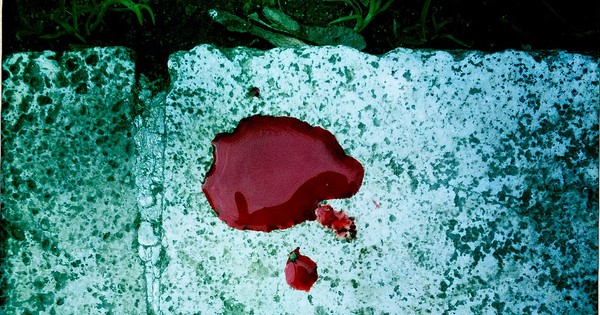
“Know thyself.” So goes the hoary admonition. But what does it mean? Perhaps that we should become more aware of our subjective states, our mental states. Or that we should become more cognizant of our motivations, mental associations, and predilections. Or that we should at least “know what we think.” But I say the self begins with the body, which is both familiar and very strange. Take blood. It’s a tissue, a fluid tissue. We each circulate about 1.5 gallons of it.
More bloody facts:
1. The blood pump—the heart—is located in the center of the chest, under the sternum (breast bone). It’s not located on the left, pledges of allegiance notwithstanding.
2. The heart is the size of a fist and weighs less than a pound.
3. We have two circulation systems. Our left heart receives oxygenated blood from the lungs and pumps it through arteries to the tissues. It’s thicker and mightier than the right heart. (And, okay, it does stick a bit over to the left.) Our right heart receives oxygen-depleted blood from the veins—blood loaded with a form of waste carbon dioxide—and delivers it to the lungs to be exhaled. Blood vessels include arteries, veins, and capillaries. Capillaries are thin-walled and lie in thick beds.
4. In the lungs, capillaries surround sacs (alveoli) that receive air. The capillaries absorb oxygen through their thin walls, and oxygen rides blood to the left heart.
5. Blood plasma is an extra-cellular fluid in which the good stuff—“formed elements”—is suspended. Blood plasma is 90 percent water. Make that seawater. It contains salt and other ions remarkably similar to that in the ocean. We began as single-celled organisms in the salt sea, and our bodies carry the memory of our maritime past.
6. The “formed elements” carried by blood plasma: white blood cells, platelets, and red blood cells.
7. White blood cells attack intruders. If they sense a nonresident bacterium or virus, they multiply and go to war. They eat the invader or else they create antibodies (proteins called immunoglobulins) to attack it.
8. Platelets—sticky cell fragments (with no nucleus or DNA)—release growth factors that repair tissue. Platelets also make clots. When blood meets air, platelets break apart. They react with vitamin K, the mineral calcium, and a protein (fibrinogen) to make fibrin, a stringy mesh that captures blood cells and holds them. That is your clot or your scab.
9. Red blood cells make up 99.9 percent of formed elements. Red blood cells carry oxygen to tissue and carbon dioxide from tissue.
10. Our bone marrow makes 2.5 million new red blood cells every second. The same number of red blood cells—2.5 million—die every second.
11. Hemoglobin is the protein in red blood cells that carries oxygen. Hemoglobin contains iron. Iron turns blood red.
12. Gases move by diffusion from areas of more pressure to areas of less pressure. Under normal atmospheric pressure, air containing oxygen arrives in the lungs with considerably more pressure than exists in the capillaries. Oxygen passes to the capillaries by diffusion.
13. On top of Mount Everest, the atmosphere contains the same amount of oxygen (21 percent), but the atmospheric pressure inside and outside the capillaries is equal. Oxygen is present but it can’t get into the capillaries. This “thin air” is one reason why the region above 8,000 meters on Mount Everest is termed the death zone.
14. Blood flows only one way. Heart valves block backflow.
15. If your valves leak, your heart murmurs.
16. Blood carries nutrients from the GI tract to tissues. It carries waste from tissues to excretory organs. It carries hormones from organ of manufacture to target organ. It’s the tissue that touches all other tissue.
17. The brain weighs three pounds, but it receives 15 or 20 percent of the body’s blood supply.
18. We have a blood type, A, B, AB, or O. The types represent the presence of different antigens. Antigens produce antibodies that attack invaders. An antigen will attack an incompatible blood type.
19. Some of us have Rh factors, named for the Rhesus monkey in which they were discovered. Rh factors are particular proteins that can be found on the surface of the red blood cells. If you possess this protein you are Rh positive. If you lack it, you are Rh negative. Rh negative blood forms antibodies against Rh positive blood.
20. Blood is thicker than water, or so they say. “Blood” here stands for kinship. What the aphorism neglects to mention is this fact of biology: Every human being alive today is kin to every other. We are all blood relations.

